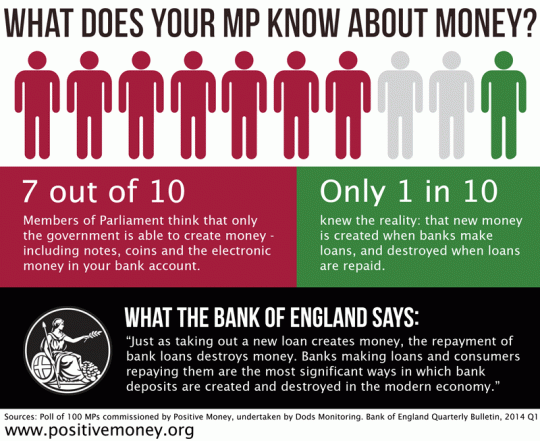Time to rewrite textbooks on money creation This article has discussed how money is created in the modern economy. Most of the money in circulation is created, not by the printing presses of the Bank of England, but by the commercial banks themselves: banks create money whenever they lend to someone in the economy or buy an asset from consumers. And in contrast to descriptions found in some textbooks, the Bank of England does not directly control the quantity of either base or broad money. The Bank of England is nevertheless still able to influence the amount of money in the economy. It does so in normal times by setting monetary policy — through the interest rate that it pays on reserves held by commercial banks with the Bank of England. M. McLeay, A.
Topics:
Lars Pålsson Syll considers the following as important: Economics
This could be interesting, too:
Lars Pålsson Syll writes Schuldenbremse bye bye
Lars Pålsson Syll writes What’s wrong with economics — a primer
Lars Pålsson Syll writes Krigskeynesianismens återkomst
Lars Pålsson Syll writes Finding Eigenvalues and Eigenvectors (student stuff)
Time to rewrite textbooks on money creation

This article has discussed how money is created in the modern economy. Most of the money in circulation is created, not by the printing presses of the Bank of England, but by the commercial banks themselves: banks create money whenever they lend to someone in the economy or buy an asset from consumers. And in contrast to descriptions found in some textbooks, the Bank of England does not directly control the quantity of either base or broad money. The Bank of England is nevertheless still able to influence the amount of money in the economy. It does so in normal times by setting monetary policy — through the interest rate that it pays on reserves held by commercial banks with the Bank of England.
M. McLeay, A. Radia & R. Thomas
Bank of England’s Monetary Analysis Directorate
